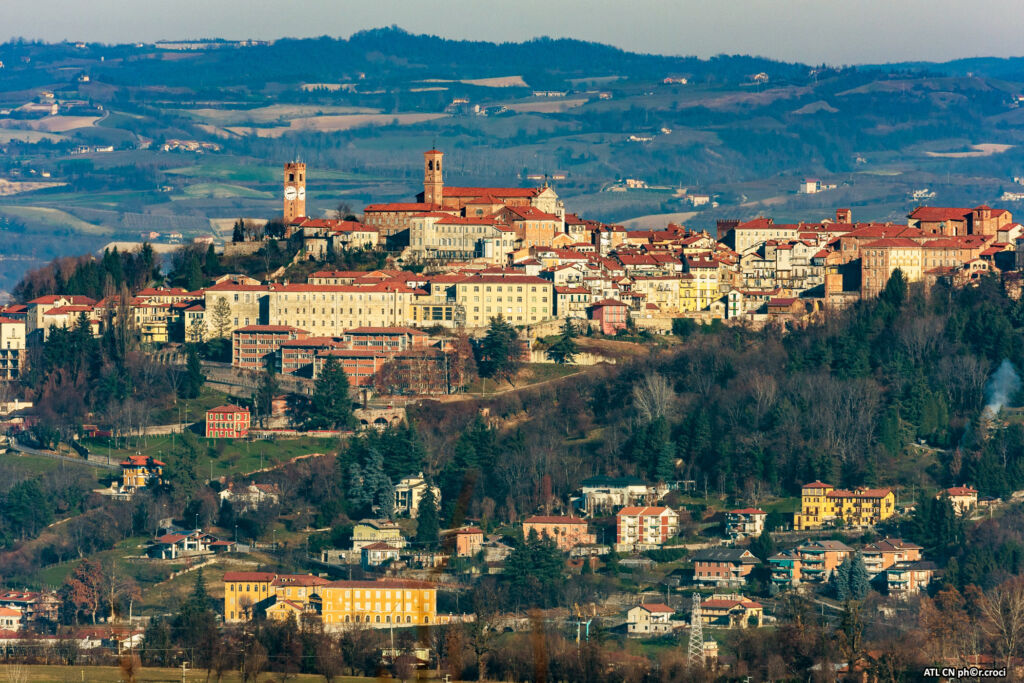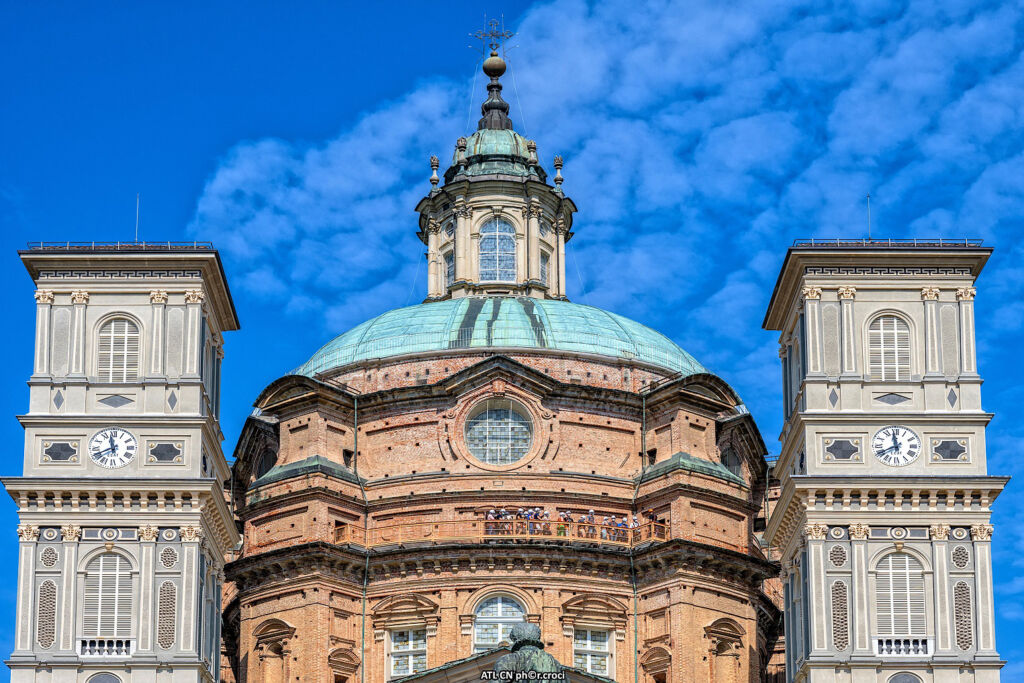

Known in Italian as Piemonte, the region extends from the Alps to the Mediterranean. It borders France in the west, Switzerland in the north, and Lombardy in the east. The name Piedmont itself is linked to its location at the foot of the mountains: “pie” stands for foot, and “monte” for mountain. Sabi Phagura recently headed to Cuneo and Turin, two of its best-known provinces, to learn more.
When I first mentioned to my Italian housemate that I was off to the Piedmont region in Italy, his eyes lit up. He said the region ‘is the ultimate epicurean paradise’, using hand gestures for added emphasis.
This information spurred me to conduct some research on Piedmont, and after doing some investigation, I learned Francesco wasn’t exaggerating. The core of the region, which lies northwest of Italy, is the Po River Valley, home to some of the best farmlands in Italy. My enthusiasm for the trip just got elevated.
Aside from the food, the purpose of my trip to Cuneo and Torino (two of the eight provinces in the Piedmont Alps—most Piedmont provinces are not in the Alps) was to ascertain some of the winter activities on offer to visitors. The first activity I threw myself into after landing at Milan airport was horse riding at La Canunia in Lurisia, Cuneo.


Mondovi and Lurisia in Cuneo
The riding school, which turns 40 this year, was opened by brothers Bruno and Andrea Ferraris, together with Francesco Mamino. They wanted to offer guests an alternative to the winter skiing and wellness linked to their hometown.
Horse riding experience isn’t required to head to La Canunia. As long as you’re relatively fit and like horses, you’ll be afforded a gentle ride through woods, meadows and mountain paths. A quick refresh by staff to awaken my limited horse-riding knowledge, and I was good to go. Miss, my delightful horse, was the perfect companion to enjoy my first couple of hours in the area.
Mondovi, a short drive from Lurisia, is a small, underrated and forgotten town left off from popular tourist itineraries. But this precisely adds to its charm. History buffs and art lovers would be in their element. This part of Piedmont is rich in medieval frescoes and Baroque architecture from the XVII and XVIII centuries.
Mondovì Piazza is the old part of the city founded around 1198, and from here, many streets will open up to various points of interest. A visit to the church of S. Peter and S. Paul is one of them where you’ll find that the façade of the building has a unique type of clock whose mechanism is decorated with a local character named “il Moro” who is popular during carnival celebrations.
It’s worth spending a couple of days in Mondovi to truly appreciate it. There are plenty of places to stay, but if you’re looking for something unique and utterly charming, then look no further than Hotel Palazzo Fauzone. Their guest book reads like a celebrity directory with famous actors, actresses and other important statesmen, adding their names accompanied by photos to their gushing praise of stays at the hotel.
After lying derelict for 60 years, it was re-opened by husband-and-wife duo Barbara and Massimo. The pair worked meticulously for seven years to restore its noble Salas (rooms) to reveal hand-painted regal fresco ceilings, 16th-century floors, and historical architecture. Barbara even went to great lengths to retrieve a door she’d recognised on a selling site as belonging to the original building. She paid a hefty price to retrieve it and restore it inside the 12th-century building.
Barbara, who is also a children’s educational author, has added ‘true character’ to each of the six bedrooms. Based on themes of well-known international fairy tales, opening the door to the rooms is like opening the cover of a book to reveal what excitement lies within. My ‘Little Prince’ or Il Piccolo Principe room was more than delightful with its rich dark blue colours; a bathroom complete with a mural depicting the book was magical. With glowing stars on the ceiling above the bed and the comfiest of orthopaedic mattresses, I feel quite the ‘princepessa’ (princess).
Another point of note is that the food lives up to its well-deserved reputation. You’ll always find the freshest of foods, and the staff of every eatery is eager to reveal the origins of their food. Hotelier Barbara only orders food from the local butcher, farmer, and baker, and their breakfast was probably one of the most delicious I have tasted.
Olives, breads, jams, pickles and pastries were devoured but not rushed gratifyingly. Enjoying ‘real’ food feels like a rarity these days, but not in Italy. Other places we ate during the visit included Locanda dei Bressani and Caffè Bertaina Osteria.
The food was just as it should taste.
Truffle hunting is big in Piedmont but is closely regulated by the government. Depending on the season, many varieties of both white and black truffles can be found here. Truffle hunter Virginia sells truffles found by her four-year-old dog, Isota, to local people in Vicoforte. She explained how it’s a rewarding but tough hobby.
She revealed that Isota, who has been truffle hunting since she was three months old, needs up to six hours of training daily. Thankfully, Isota loves her hobby-and-job-in-one, and it showed when Virginia let her off her lead to hunt truffles. Isota was in her element and, prompted by her owner, weaved in and out of the snow-covered trees, bushes, and grass to uncover truffle from beneath the ground. She duly pulled out ‘Tuber brumale’, a black truffle which was in season during my visit.
Prato ski
With Piedmont sitting at the foot of the mountains, skiing is part and parcel of the activities. From the ground up in Mondavi, it’s simple to get to Prato ski resort. A local family-friendly resort, Prato is less frequented by tourists and thus less crowded. The resort allows for newbies to learn and ambitious beginners (like me) to progress.
Generally found further up the mountain, there are some challenging reds for intermediates to test themselves on. Advanced skiers have limited options, though, as there are only a few long blacks in the ski area.
Our group of mixed ski abilities was more than happy to experience the mountains individually. While visibility wasn’t the best on the day, each one of us had stories to exchange about our experience when we lunched at Chalet Rosso. And amidst the chatter, once again, was good food. The family-run mountain hut’s menu read like a dream. The recipes were created by an uncle, aunt, mother, and, of course, Nonna.
After a taste of skiing, our group was eager to head to Sestriere, a resort in Italy’s western Alps near the French border. But before we did, we had the chance to visit Santuario Basilica Regina Montis Regalis, dedicated to the Nativity of Mary.
The famous monument has the largest elliptical masonry dome in the world and features a single-themed pictorial field spanning over 6,000 square metres. Kalamata company allows helmet and harness tours so visitors can climb 60 metres high to admire this marvellous work. Hands down, it’s one of the best experiences I have had visiting a Basilica.
Sestriere and Sauze d’Oulx in Turino
Arriving in Sestriere some three hours by road, we were in luck. The snow was falling hard and fast and would provide the best ski conditions for the morning.
Vialattea is among Europe’s largest ski resorts, comprising eight distinct locations in the Piedmont region: Sestriere, Sauze d’Oulx, Sansicario, Cesana, Claviere, Pragelato, Oulx and Montgenèvre, uniting Italy and France.
With its highest point at 2,800m and a total of 400km of skiable area across 250 slopes, Vialattea caters to skiers and snowboarders of all abilities, with ample area for beginners to find their feet and dedicated baby fun park spaces in areas including Sauze d’Oulx.
This versatile ski area has hosted several prestigious sporting events over the years, including the 2006 Turin Winter Olympics.
With our mixed abilities on the slopes, there was fun to be had for everyone in the group. Having only recently learnt to ski, I took my time to refresh my skills on the small slopes before heading onto the blue runs. Visibility was clear; the sun was sporadically revealing itself from beyond the clouds, and I glided my way down the mountain with more grace than I had done in the past.
You don’t have to be a skier or snowboarder to enjoy the white powder. I’ve always wanted to do dog sledging, and The Husky Experience in Sestriere felt like it was time to tick it off my bucket list.
Experiencing the mountain with the same passion as these magnificent Siberian Huskies was exhilarating but nothing like what I had expected. While the exceptional four-legged athletes are strong, I needed to work with them in unison and pull my weight.
Selena, our guide, said we would need to get off the sledge to help push it up gentile hills. We also needed to move our bodies in the direction of the turns on the trail.
It took a while to get the hang of it, especially the cues to get the huskies moving, slowing and stopping. But once I did, the adrenalin pumped, and I enjoyed the wind on my face and the crunch of the snow beneath the sledge.
A separate article would need to be dedicated to food produced from Piedmont, but I can confirm you can expect to dine handsomely here. We certainly did, including aperitifs at Igloo Ski Bar (in an inflated transparent igloo), lunch at La Marmotta mountain hut and dinners at Misun La Font restaurant and QB Restaurant.
Barba Gust agritourism
But before I returned to the UK, I wanted to understand how and why the food tasted so good there. My curiosity led me to Barba Gust, an agritourism project.
Run by the hard-working head of the family, Augusto Bermond, the farm produces meat, cheese and strawberries. The secret to good-tasting food is to look after the animals, said Augusto.
“The aim of our activity is looking at the well-being of the animals. We love our animals and feed them properly.”
And the proof, as they say, is in the pudding. With a feast lying in front of me in the restaurant, there was nothing else for me to do but enjoy one of life’s simple pleasures – food made lovingly.
You don’t have to be a powderhound to enjoy the Piedmont region. There’s plenty in store for visitors to get involved in. But if you are and love skiing or snowboarding, then it’s time to get your skis on. The snow forecast is looking good for the rest of the season.
Cuneo and Turin – Where and How?
For more information on Cuneo and Turin and to learn about the range of activities you can get involved in, visit www.visitcuneese.it and www.turismotorino.org/en.
